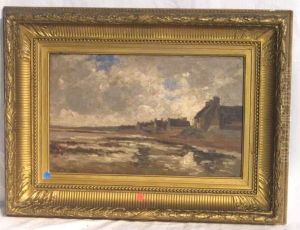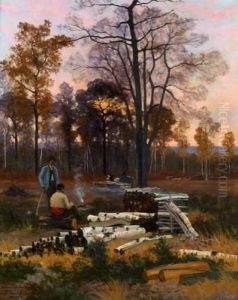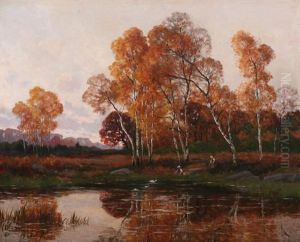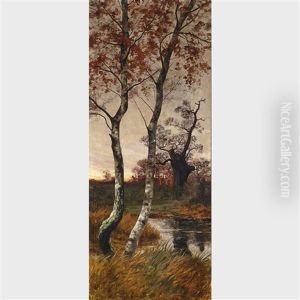Paul Emile Berton Paintings
Paul Emile Berton was a distinguished French artist, born in 1869, whose work significantly contributed to the art movements of his time. Despite not being as widely recognized as some of his contemporaries, Berton's artistic journey and contributions make for an intriguing study within the realm of late 19th and early 20th-century European art.
Berton's initial foray into the arts was influenced heavily by the cultural milieu of France during a period of rich artistic diversity and innovation. He was part of a generation that witnessed the evolution of Impressionism into Post-Impressionism and beyond, absorbing a wide range of stylistic influences that would later permeate his work. His early education and exposure to the arts were foundational in developing his unique style, which often blended traditional themes with more modern artistic expressions.
Throughout his career, Paul Emile Berton was known for his versatility across different media, including painting and illustration. His subject matter varied widely, capturing landscapes, portraits, and scenes of daily life with a sensitivity and attention to light and color that echoed the Impressionist preoccupation with capturing fleeting moments. However, Berton also incorporated elements that pointed towards the emerging styles of Symbolism and Art Nouveau, particularly in his approach to form and the decorative quality of his compositions.
Despite his talents and contributions to the art world, Berton did not achieve the same level of fame as some of his peers. This can perhaps be attributed to the eclectic nature of his work, which straddled multiple styles and movements, making it difficult to categorize within the rapidly changing landscape of early 20th-century art. Nevertheless, his works were exhibited in various salons and exhibitions, earning him recognition among his contemporaries and a place in the broader narrative of French art history.
Paul Emile Berton passed away in 1937, leaving behind a body of work that continues to be appreciated for its beauty and historical value. Today, his paintings and illustrations can be found in private collections and museums across France and beyond, serving as a testament to his artistic legacy and the enduring appeal of his vision.



